The cassette on a bike is a crucial component of the drivetrain, consisting of a set of sprockets on the rear wheel that work with the rear derailleur to provide different gear ratios. Understanding your bike’s cassette is essential for optimal performance and maintenance. At usabikers.net, we help you explore everything about cassettes, from their function to their compatibility, ensuring you get the most out of your ride. Learning about cassette gear ratios, freehub compatibility, and the differences between road bike and mountain bike cassettes can significantly enhance your cycling experience.
1. What Exactly is a Cassette on a Bike?
A bike cassette is a cluster of sprockets located on the rear wheel that works in tandem with the rear derailleur to change gears. Instead of being just a collection of cogs, the sprockets in a cassette are designed with precision to ensure smooth shifting between gears. The individual teeth on the sprockets have unique shapes, and ramps are integrated into the sides to facilitate seamless gear changes.
1.1 How Cassette Design Enhances Shifting
The design of a cassette plays a significant role in how smoothly a bike shifts gears. Manufacturers like Shimano have developed technologies such as Hyperglide and Hyperglide+ to optimize shifting performance. According to Shimano, Hyperglide+ reduces shifting time by up to a third compared to Hyperglide and enhances shifting performance under power. Similarly, SRAM and Campagnolo have refined cassette designs to ensure efficient gear changes.
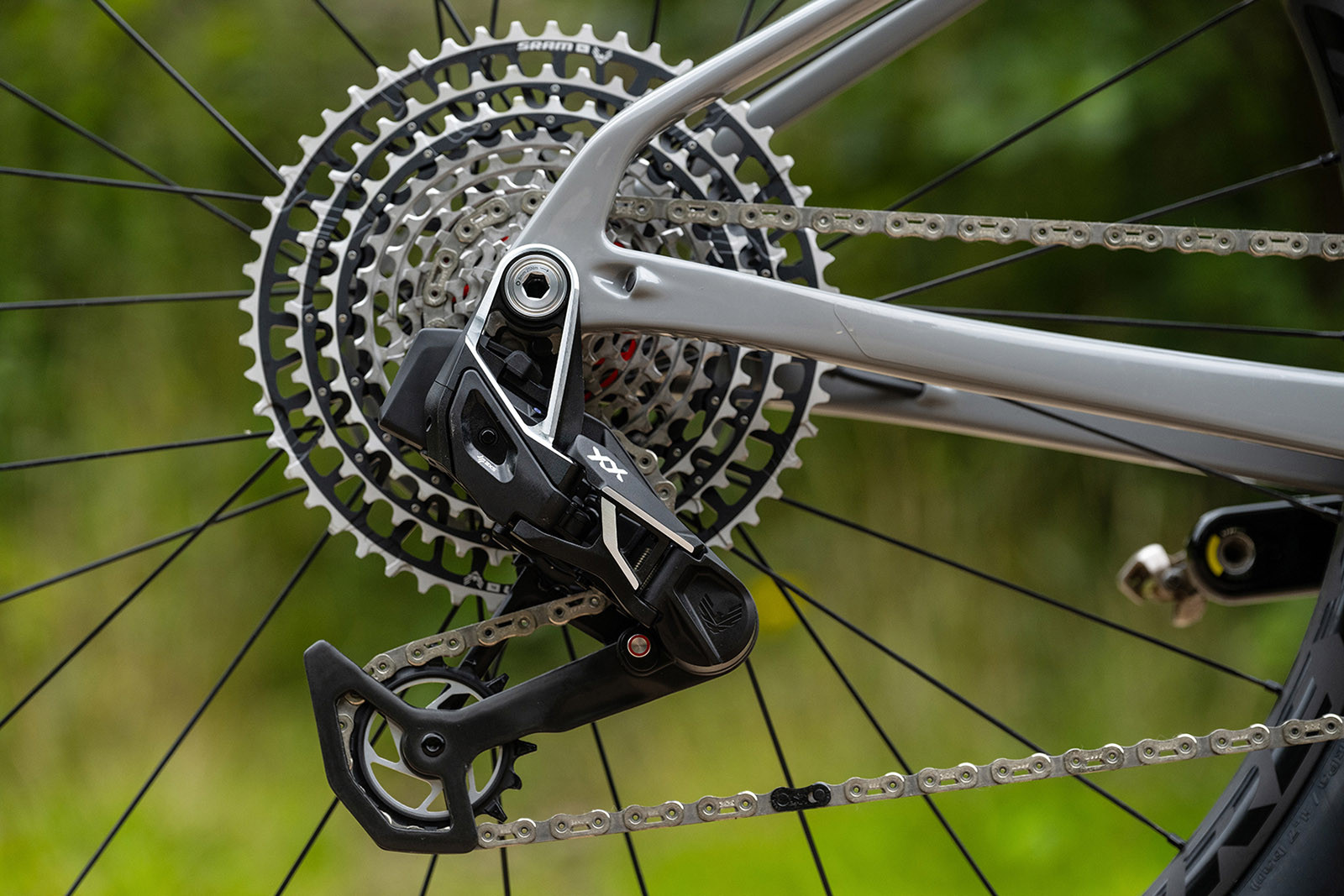 Merida Big.Nine 10K hardtail mountain bike
Merida Big.Nine 10K hardtail mountain bike
1.2 Why Cassettes Are Replaced as a Whole Unit
Given that cassettes are designed as a complete system, the sprockets are sold and replaced as a set. Swapping out individual sprockets can compromise shifting performance. This design ensures that each part works harmoniously with the others. For those looking to replace their cassette, usabikers.net offers a detailed guide on how to change your cassette in five simple steps.
2. How to Determine Your Cassette’s Speed?
The “speed” of a cassette refers to the number of sprockets it has, ranging from 7 to 13. High-spec road bikes commonly feature 12-speed gearing. For mountain bikes, 12-speed cassettes are standard for higher-end groupsets, often paired with a single-ring crankset.
2.1 Matching Cassette Speed to Other Components
The number of sprockets on your cassette must align with the design of your other components. Indexed gear systems require shifters to move the derailleur a specific distance with each click. Therefore, using a cassette with a different number of sprockets will result in improper functioning. Furthermore, the chain must be the correct width to match the number of sprockets.
2.2 Exceptions to the “More is Better” Rule
While the trend leans towards more gears, there are exceptions. For example, SRAM’s X01 DH and GX DH downhill mountain bike groupsets use seven-speed cassettes with 11-speed chains. This setup provides closer gear ratios and allows for shorter cage derailleurs, improving ground clearance on bikes where climbing capability is less critical.
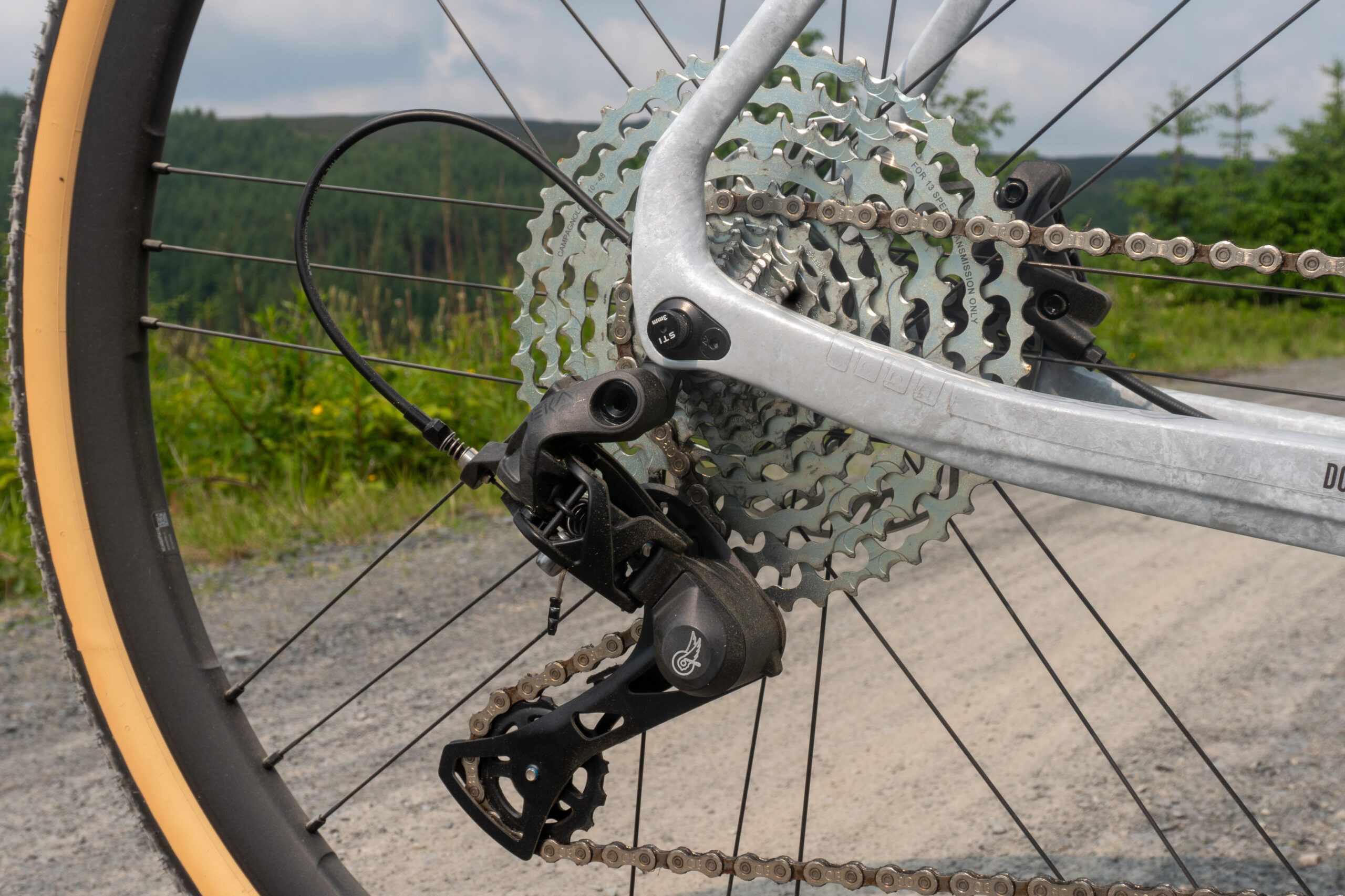 Campagnolo Ekar GT rear derailleur
Campagnolo Ekar GT rear derailleur
3. Understanding Cassette Gear Ratios
Gear ratios play a vital role in your bike’s performance, influencing how easy or difficult it is to pedal in different conditions. Understanding these ratios can help you select the right cassette for your riding style and terrain.
3.1 Basics of Gear Ratios
A cassette’s gear ratio is determined by the number of teeth on its smallest and largest sprockets. Cassettes typically start with 10, 11, or 12 teeth, though there are options with 9, 13, or 14 teeth.
3.2 Calculating Gear Range Percentage
Manufacturers often refer to a cassette’s range as a percentage. For example, SRAM boasts a 520% range with its 10-52t cassettes. This percentage is calculated by dividing the number of teeth on the largest cog by the number of teeth on the smallest cog. In this case, 52 teeth is 520% larger than 10 teeth. This figure indicates the range of gears on your cassette but doesn’t determine how far you will travel with a specific gear ratio or whether it is suitable for your riding style. For that, you would need to calculate gear inches.
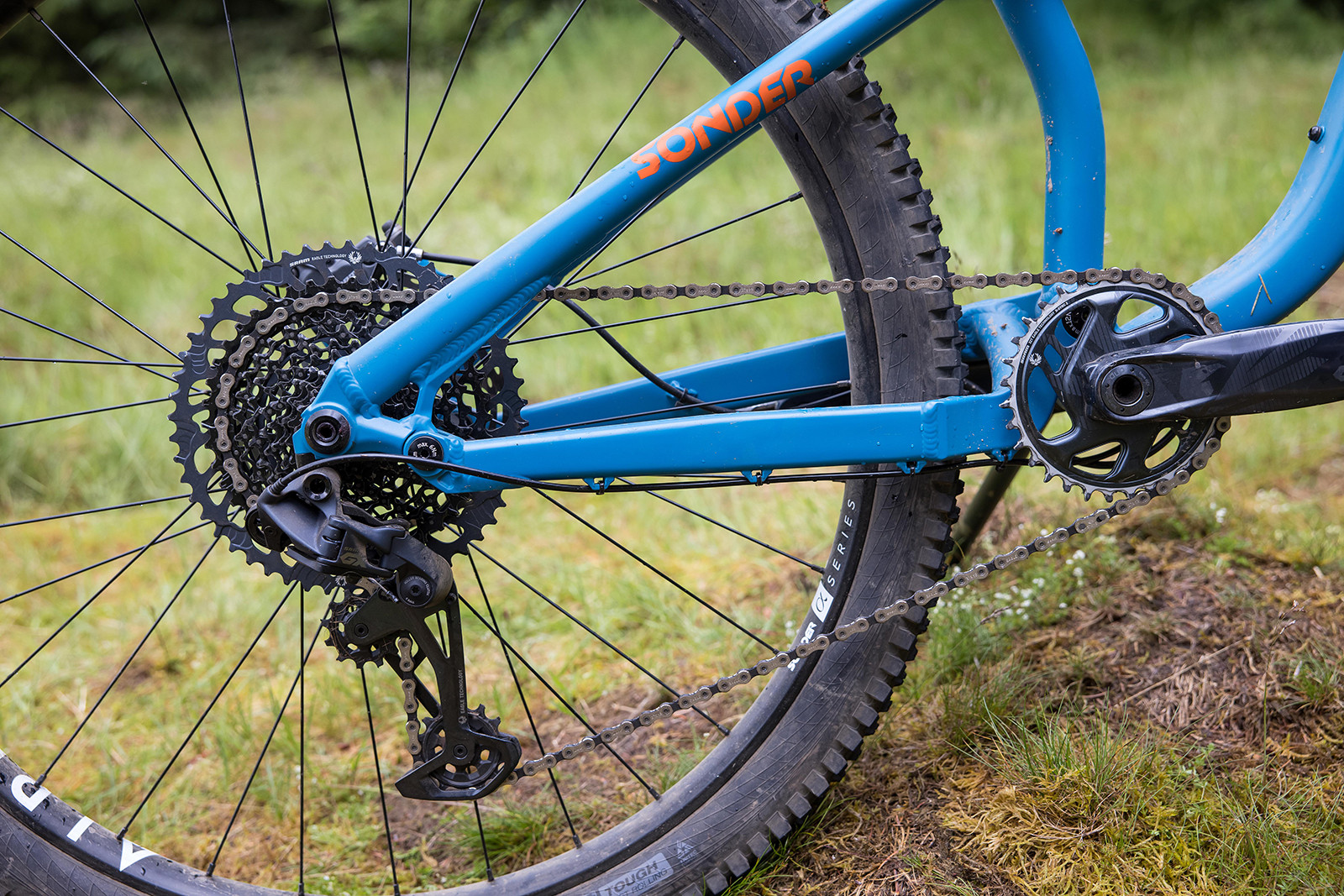 SRAM Eagle offers a large 52-tooth sprocket on some cassettes.
SRAM Eagle offers a large 52-tooth sprocket on some cassettes.
4. Road Bike Cassettes: What You Need to Know
Road bike cassettes have evolved significantly, with larger sizes becoming increasingly common. Modern road bikes with 12-speed groupsets offer larger ranges while maintaining small jumps between gears.
4.1 Evolution of Road Bike Cassette Sizes
An 11-28 cassette was once considered a large training cassette, but it is now at the lower end of the typical range. This shift is due to the increase in cassette speeds. With more sprockets, cassettes can have a larger range without significant jumps between gears.
4.2 Advantages of Higher Speeds
The move to 12-speed road bike groupsets allows for smaller increments between gears, especially at the lower end of the cassette. This means riders can maintain a more consistent cadence, improving efficiency and reducing strain on the knees.
4.3 Differences Between Shimano, Campagnolo, and SRAM
Shimano and Campagnolo have largely maintained pre-existing gear ratios in their transition to 12-speed, using the additional cog to bridge the gaps between gears. Shimano’s R9200 series offers 11-28, 11-30, and 11-34 options. Campagnolo offers an 11-29 option for all 12-speed groupsets, along with an 11-32 cassette and an 11-34 cassette compatible with Chorus.
SRAM, however, has taken a different approach by increasing the range of the cassette. SRAM road cassettes start from a smaller 10t (requiring the XDR freehub body) and feature smaller chainring sizes such as 50/37, 48/35, and 46/33. SRAM cassettes are available in 10-28, 10-30, 10-33, and 10-36.
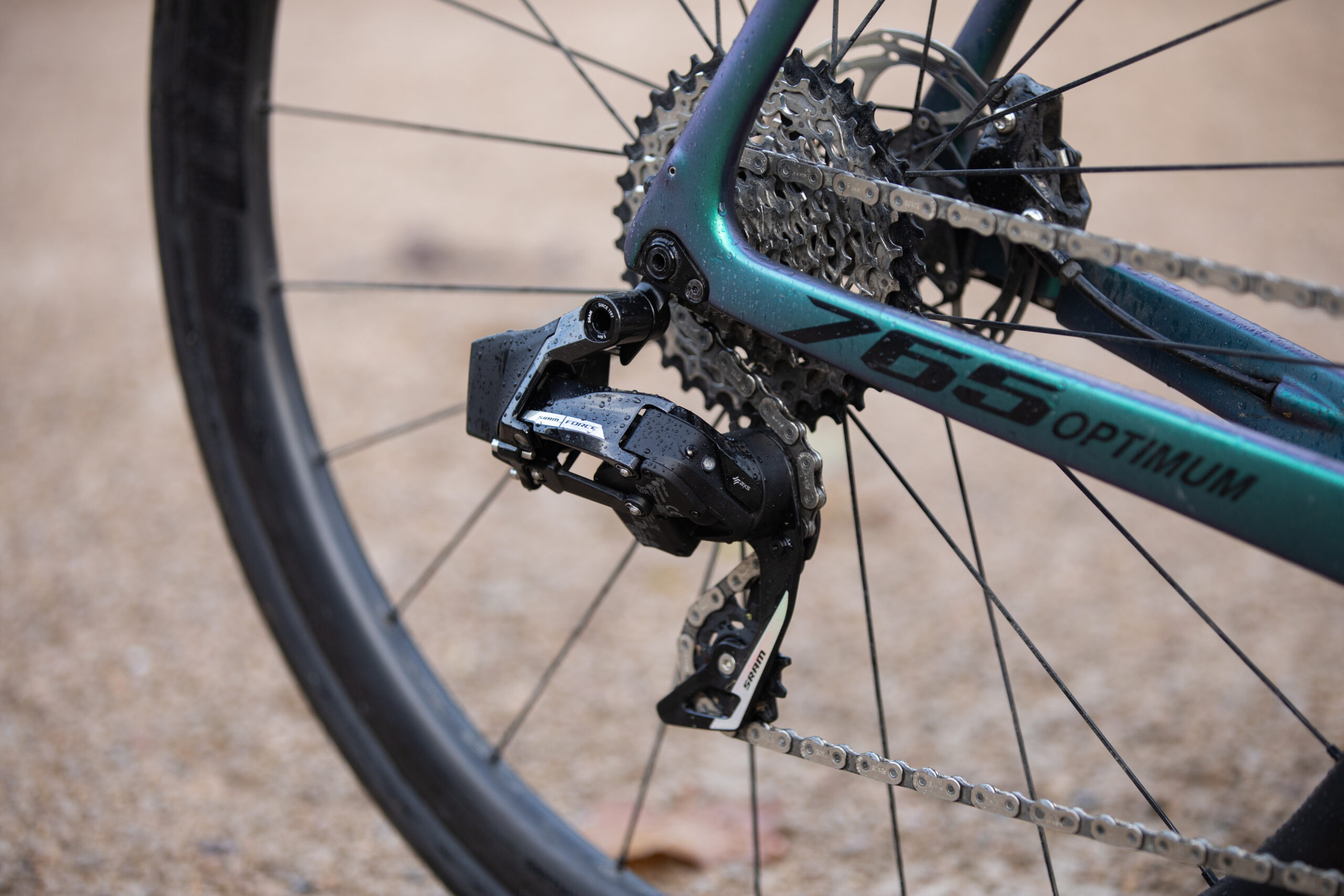 SRAM Force AXS rear derailleur on Look 765 Optimum
SRAM Force AXS rear derailleur on Look 765 Optimum
5. Mountain Bike Cassettes: Maximizing Your Off-Road Performance
Mountain bike cassettes have also increased in size, largely due to the popularity of 1x drivetrains. Without a small inner ring for climbing, cassettes need to offer a wider range to provide suitable climbing gears.
5.1 The Impact of 1x Drivetrains
The rise of 1x drivetrains has necessitated wider-range cassettes. Mountain bike cassette options are typically more limited than road bike options.
5.2 Shimano and SRAM Options
Shimano offers two 12-speed cassette sizes: 10-45 (not available for Deore) and 10-51. The 10-51 option is for 1x setups, while the 10-45 can be used for either 1x or 2x systems. SRAM also offers two cassette sizes in its Eagle lineup: 10-50 and 10-52. The 10-52 is the widest-range cassette and requires a compatible rear derailleur.
For users of SRAM’s entry-level Eagle groupsets, SX Eagle and NX Eagle, SRAM offers an 11-50 cassette that fits onto a standard Shimano HG freehub, as the 10t options require an XD freehub.
5.3 SRAM’s New Transmission
SRAM has introduced its new Transmission, which eliminates the derailleur hanger and works only with a 10-52t cassette. This system relies on a rear derailleur without limit and B-gap screws.
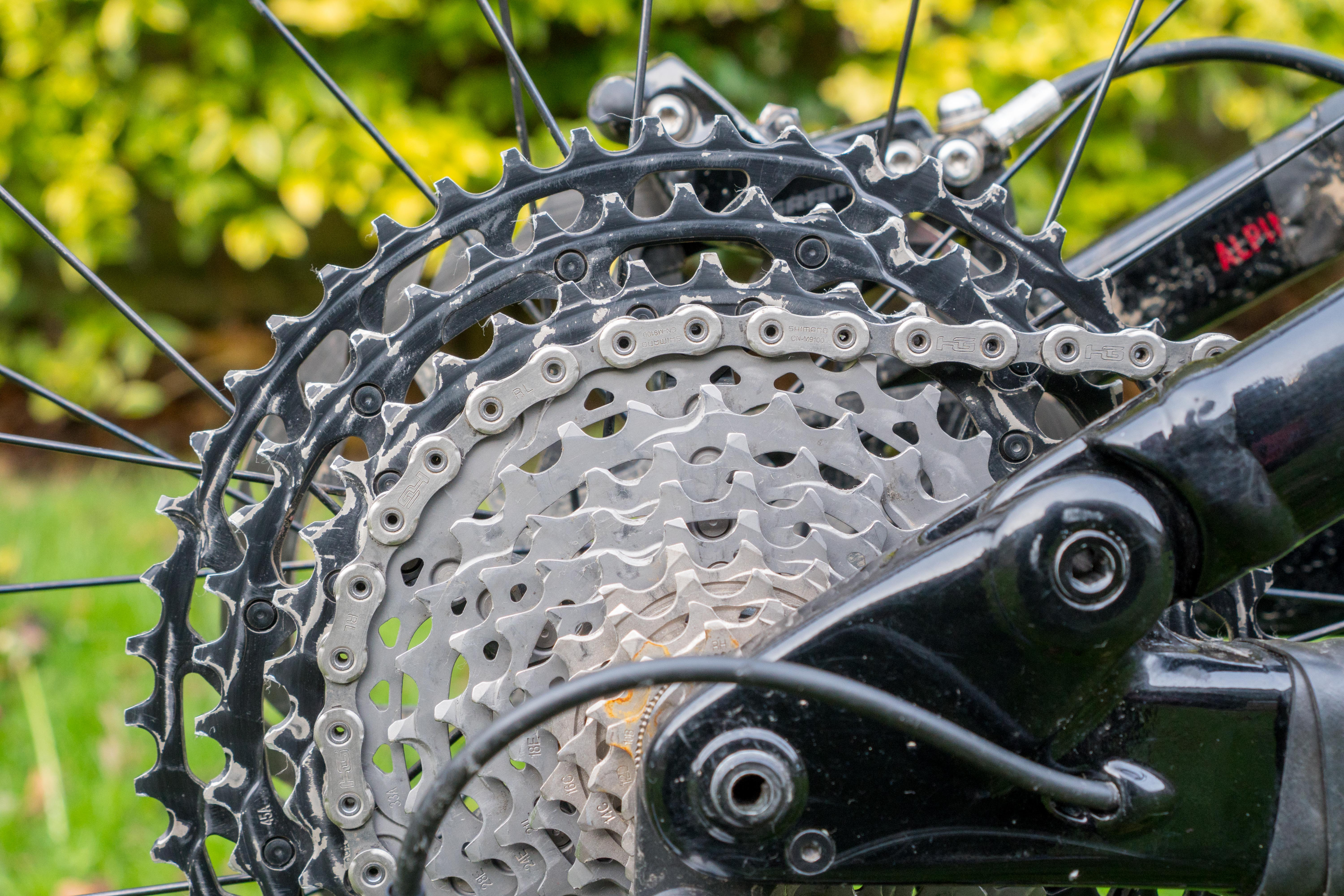 Shimano XTR M9100 mountain bike groupset
Shimano XTR M9100 mountain bike groupset
6. Gravel Bike Cassettes: Blending Road and Mountain Bike Technology
Gravel bikes combine features from both road and mountain bikes, so they often use either a road or mountain bike cassette. However, as gravel-specific groupsets have emerged, there are now dedicated gearing options.
6.1 Gravel-Specific Gearing Options
SRAM’s XPLR AXS groupsets are designed specifically for gravel riding. SRAM XPLR cassettes have a range of 10-44 and require a compatible rear derailleur. It’s also possible to mix and match drop-bar shifters with mountain bike Eagle eTap AXS components for a wide-range 1x build, known as a ‘mullet’ setup. You can also combine XPLR AXS shifters and cranksets with a Transmission drivetrain.
6.2 SRAM’s Red XPLR AXS
SRAM’s latest Red XPLR AXS groupset features a direct-mount rear derailleur, similar to Transmission. It is a 13-speed system with a 10-46t ratio.
6.3 Campagnolo Ekar
Campagnolo also offers 13-speed groupsets for gravel. The Campagnolo Ekar 13-speed gravel groupset offers cassettes with a 9-tooth smallest sprocket and options in 9-36, 9-42, or 10-44. Ekar is 1x only. The second-tier Campagnolo Ekar GT groupset is also 1x only but has an option for a 10-48t cassette.
6.4 Shimano GRX
Shimano GRX users can choose between 10-45 and 10-51t on 12-speed 1x drivetrains, or 11-34 or 11-36t in its 2x configurations. For the original 11-speed version, riders can select from Shimano’s 11-speed road or mountain bike cassettes. Road cassettes go up to an 11-34, and mountain bike cassettes are offered in 11-40, 11-42, or 11-46.
 Campagnolo Ekar GT rear derailleur
Campagnolo Ekar GT rear derailleur
7. Understanding Cassette Compatibility
Cassette compatibility is essential for ensuring your drivetrain functions correctly. The freehub body, which interfaces with the cassette, plays a critical role in this compatibility.
7.1 Freehub Compatibility
A freehub has splines that mesh with notches in your cassette, ensuring proper positioning and orientation. Each manufacturer has its own freehub design, so not all cassettes will work with every wheel or groupset. For a comprehensive guide to freehubs, their function, and compatibility, visit usabikers.net.
7.2 Shimano Freehubs
The most common system is the Shimano 11-speed HG-style freehub, which has 9 splines. Most Shimano groupsets up to the 11-speed era used this freehub style. SRAM groupsets prior to the current generation of 12-speed groupsets also used the same design, with some exceptions for larger cassette ratios on their 1×11 groupsets.
Shimano recently introduced an updated freehub design for its 12-speed Ultegra and Dura-Ace road bike groupsets, which is backwards-compatible with 11-speed Shimano freehubs. For mountain bikes, Shimano uses its Microspline freehub standard for its 12-speed Deore, SLX, XT, and XTR groupsets.
When using a Shimano HG freehub, consider the cassette’s width. Road wheels have slightly wider freehubs than MTB ones (by 1.85mm), and 11-speed Shimano HG road cassettes are slightly wider than 8- or 9-speed ones (again by 1.85mm).
You can fit a mountain or road cassette with fewer ratios on an 11-speed road hub by adding a 1.85mm spacer, but you can’t fit a road cassette on an MTB freehub. Since 10-speed road cassettes are narrower than 8- or 9-speed ones, you need to use a 1.85mm spacer plus an additional 1mm spacer.
7.3 Campagnolo Freehubs
Campagnolo uses its own freehub design, which is incompatible with Shimano and SRAM cassettes. The brand has also introduced a new freehub standard called N3W to support its 13-speed Ekar cassettes. An adaptor allows this freehub to work with Campagnolo’s older-standard cassettes as well.
7.4 SRAM Freehubs
SRAM introduced its XD freehub standard for cassettes with a 10-tooth smallest cog. This design was later adapted for road bikes with XDR, which also enables the use of 10-tooth cogs but is slightly wider than the road bike standard.
SRAM XDR road cassettes are 1.85mm wider than SRAM XD MTB cassettes. With a spacer, you can run an XD cassette on a road wheel with an XDR body, but you can’t use an XDR cassette on an XD freehub.
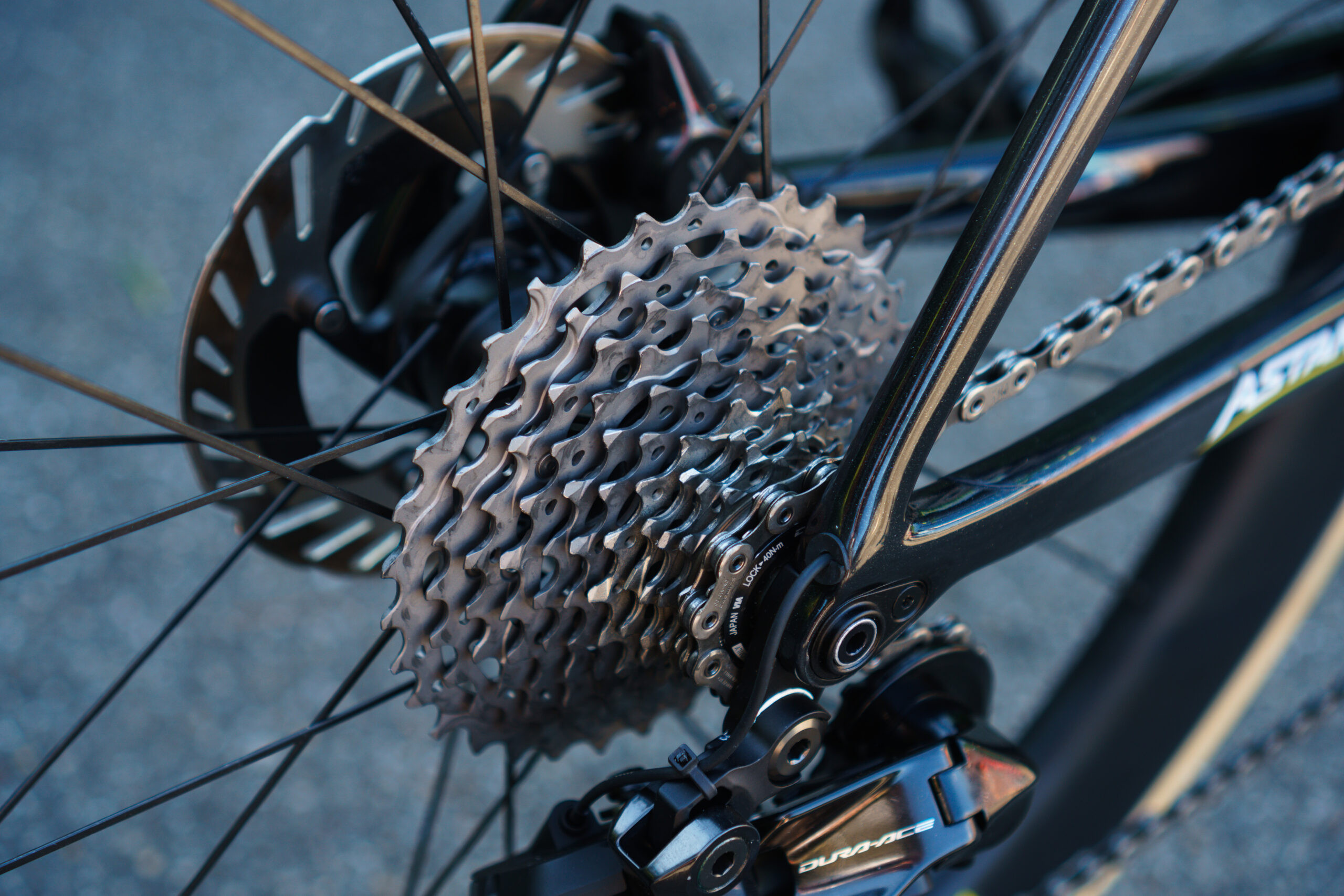 Shimano Dura-Ace 11-34t cassette on Mark Cavendish
Shimano Dura-Ace 11-34t cassette on Mark Cavendish
8. Mountain Bike Cassettes vs. Road Cassettes
Choosing between a mountain bike cassette and a road cassette depends on your riding needs. Understanding their differences will help you make the right choice.
8.1 Compatibility and Usage
Most riders won’t want to use a road bike cassette on a mountain bike because the range of a road cassette is smaller. Off-road riding requires a wider range of gears for technical climbs and descents.
8.2 Considering a Mountain Bike Cassette on a Road Bike
You might consider using a mountain bike cassette on a road bike if you need an easier climbing gear or if you’re bikepacking. However, ensure your freehub and derailleur are compatible with a larger-range cassette.
8.3 Derailleur Compatibility
The cage of a rear derailleur is designed for a specific range of gears. For example, Shimano’s outgoing Dura-Ace R9100-SS rear derailleur is designed for use up to an 11-30 cassette. Using an 11-34 cassette would require a longer cage derailleur to take up the additional slack from the chain.
If you wanted to use an 11-34 cassette, you would need to buy a compatible rear derailleur, such as an Ultegra R8050-GS or 105 R7000-GS rear derailleur. The GS denotes that these are ‘medium cage’ derailleurs. The same rule applies to Shimano Di2 derailleurs.
SRAM AXS rear derailleurs can take up to a 33t for road, indicated by ‘Max 33t’ on the derailleur cage. There is also a ‘Max 36t’ option for the 10-36 cassette, as well as an XPLR rear derailleur that can take up to a 44t (or the 10-46t cassette for Red XPLR AXS).
Campagnolo 12-speed rear derailleurs can accept up to an 11-32. The exception is Campagnolo Chorus, which can take up to an 11-34. If you’re changing to a larger cassette ratio, make sure your chain is long enough.
8.4 Chain Length
If you’re changing to a larger cassette ratio, you’ll also want to make sure your chain is of a sufficient length.
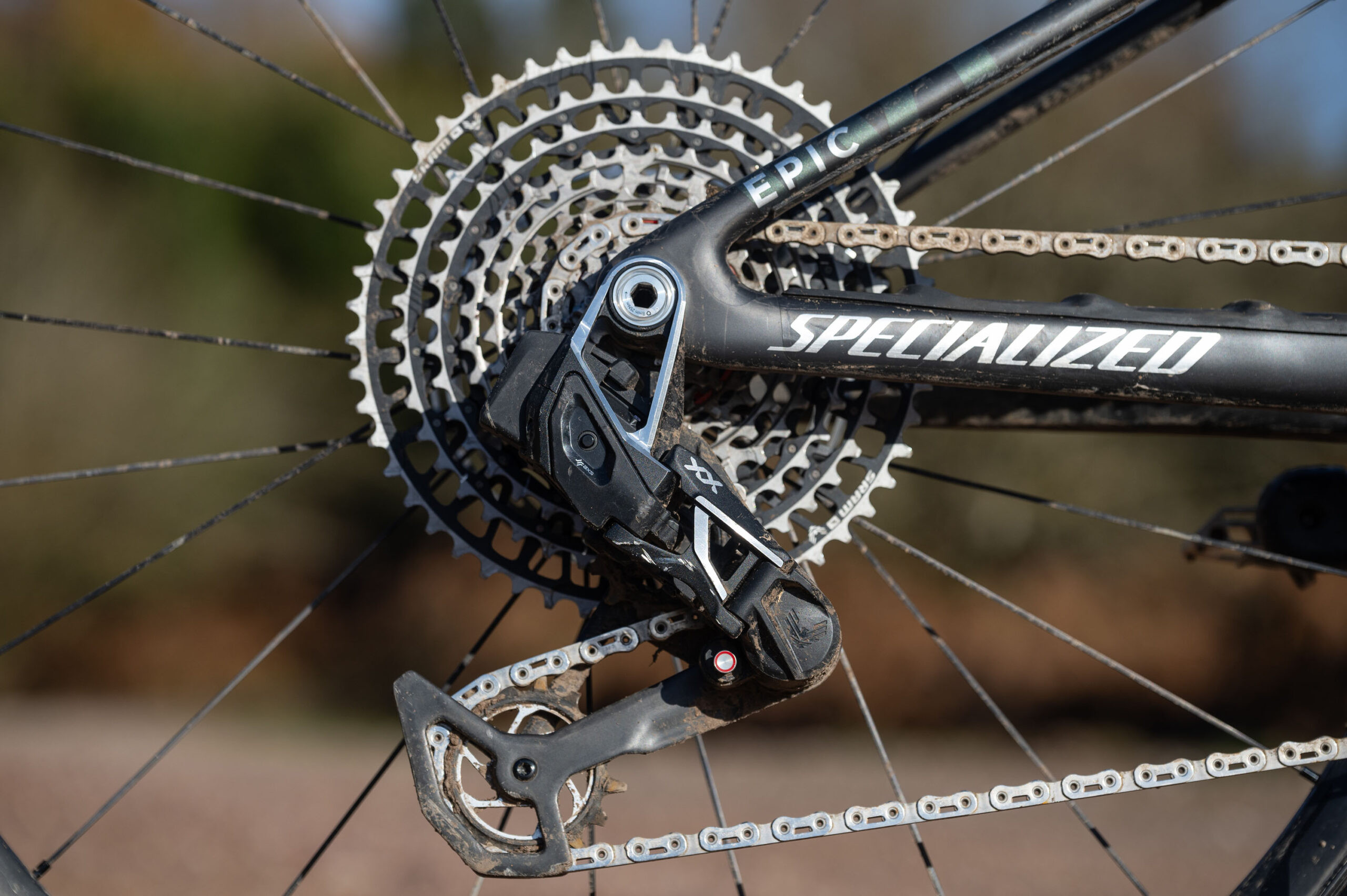 Specialized Epic World Cup with SRAM XX SL drivetrain
Specialized Epic World Cup with SRAM XX SL drivetrain
9. Cassette Materials: Steel vs. Aluminum vs. Titanium
The materials used in a cassette affect its weight, durability, and price. Understanding these differences can help you make an informed purchase.
9.1 Common Materials
The least expensive cassettes are typically made of pressed steel, which is durable but heavy. As you move up in price, you’ll find cassettes made from flashier materials with better finishing.
9.2 High-End Options
The top-spec Shimano Dura-Ace R9200 cassette has five of its 12 sprockets made of titanium. Steel is used for the smallest sprockets because they have fewer points of contact with the chain, and a softer material would wear out more quickly.
SRAM saves weight in its highest-spec SRAM Red AXS 12-speed road cassette by machining it as one piece from a single block of steel, removing excess material. Rotor and Miche save weight by making their cassettes, compatible with major road bike groupsets, out of aluminum alloy.
9.3 Sprocket Carriers and Spacers
Larger sprockets are often joined together in clusters supported by a carrier (or ‘spider’) that meshes with the freehub. This saves weight, and the carrier is often made of a lighter material like carbon fiber.
Where cassettes have individual sprockets, mid-range options typically use spacers made of alloy or plastic. Smaller sprockets often have the spacer integrated into them.
Most cassettes (except SRAM XD and XDR) are secured to the freehub body with a locknut made of steel or aluminum alloy.
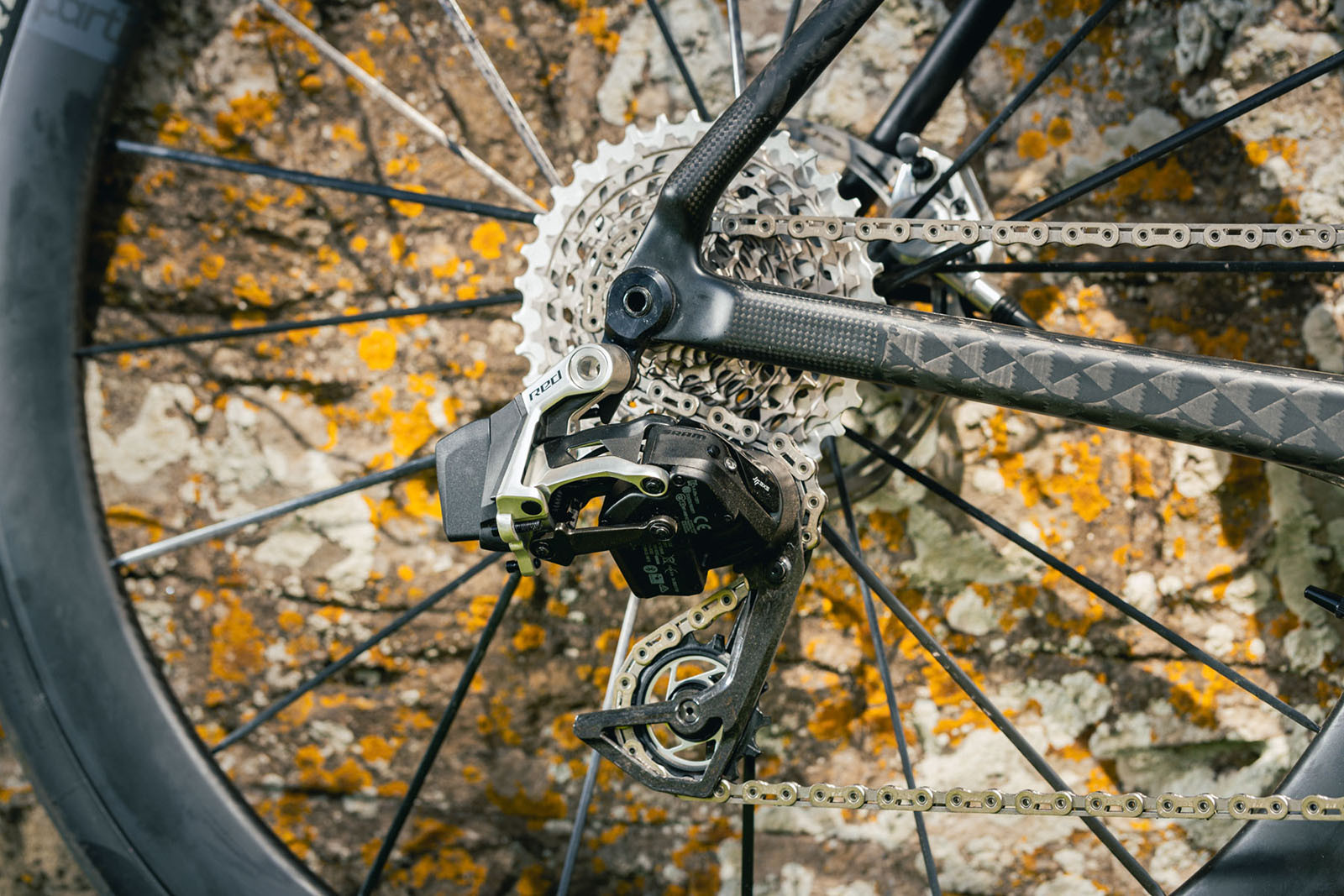 SRAM Red AXS groupset
SRAM Red AXS groupset
10. Cassette Prices: What Determines the Cost?
High-end cassettes can be expensive, costing over £300. The price is determined by factors such as materials, manufacturing processes, and finishing.
10.1 Factors Affecting Price
Higher-spec cassettes are made from exotic materials like titanium or carbon fiber and are often machined in one piece. They are more intricately finished and weigh less than cheaper models.
10.2 Performance vs. Cost
There isn’t much performance difference between a Dura-Ace 11-28 cassette and one from Shimano Ultegra or Shimano 105. You can save money by choosing a lower-spec option. SRAM offers similar options, including the more affordable Rival eTap AXS cassettes. The same applies to equivalent mountain bike groupsets.
10.3 Cassette Maintenance
Remember that a cassette is a wear component and requires periodic replacement. Changing your chain when it reaches .5 on a chain checker tool (for 11/12/13-speed) or .75 (for 10-speed and below) can extend the life of your cassette. A rough rule of thumb is to run three chains on one cassette. Clean your chain regularly to maintain its condition and prevent unnecessary wear.
FAQ: Understanding Bike Cassettes
1. What is a cassette on a bike?
A cassette is a cluster of sprockets on the rear wheel that works with the rear derailleur to change gears, providing different gear ratios for various riding conditions.
2. How do I know what “speed” my cassette is?
The speed of your cassette refers to the number of sprockets it has. Count the number of sprockets to determine its speed (e.g., 11-speed, 12-speed).
3. What is a gear ratio, and why is it important?
A gear ratio is the relationship between the number of teeth on the front chainring and the rear cassette. It determines how easy or difficult it is to pedal. Understanding gear ratios helps you choose the right cassette for your riding style and terrain.
4. Can I use a road bike cassette on a mountain bike?
Generally, it’s not recommended due to the smaller gear range of road cassettes. Mountain biking requires a wider range for varied terrain.
5. What is a freehub, and why is it important for cassette compatibility?
A freehub is the part of the rear wheel that the cassette attaches to. It has splines that mesh with the cassette, ensuring proper positioning. Compatibility between the cassette and freehub is crucial for the drivetrain to function correctly.
6. What materials are cassettes made from, and how do they affect performance?
Cassettes are typically made from steel, aluminum, or titanium. Steel is durable but heavy, while aluminum and titanium are lighter but can be more expensive. The material affects the cassette’s weight, durability, and overall performance.
7. How often should I replace my cassette?
Replace your cassette when it shows signs of wear, such as skipping gears or poor shifting performance. Regularly checking your chain for wear and replacing it when necessary can extend the life of your cassette.
8. What is the difference between Shimano, SRAM, and Campagnolo cassettes?
Shimano, SRAM, and Campagnolo cassettes have different designs and compatibility requirements. Each brand uses its own freehub design, so cassettes are not always interchangeable.
9. What is the difference between XD and XDR freehubs?
XD and XDR freehubs are SRAM standards. XD is for mountain bike cassettes with a 10-tooth smallest cog, while XDR is for road bike cassettes with a 10-tooth smallest cog. XDR is slightly wider than XD, and they are not directly compatible.
10. How do I choose the right cassette for my bike?
Consider your riding style, terrain, and the compatibility of your other drivetrain components. A wider gear range is better for varied terrain, while closer gear ratios can improve efficiency on flatter roads.
Understanding the cassette on your bike is vital for optimizing your riding experience. From gear ratios to compatibility, each aspect plays a role in your bike’s performance. For more detailed information, guides, and community support, visit usabikers.net, your go-to resource for all things biker. Connect with fellow enthusiasts, explore our comprehensive guides, and stay updated on the latest trends in the biking world.
Ready to take your biking knowledge to the next level? Explore usabikers.net today and unlock a wealth of information and a vibrant community of fellow riders. Don’t miss out – your next great ride starts here Address: 801 Sturgis Main St, Sturgis, SD 57785, United States. Phone: +1 (605) 347-2000.

